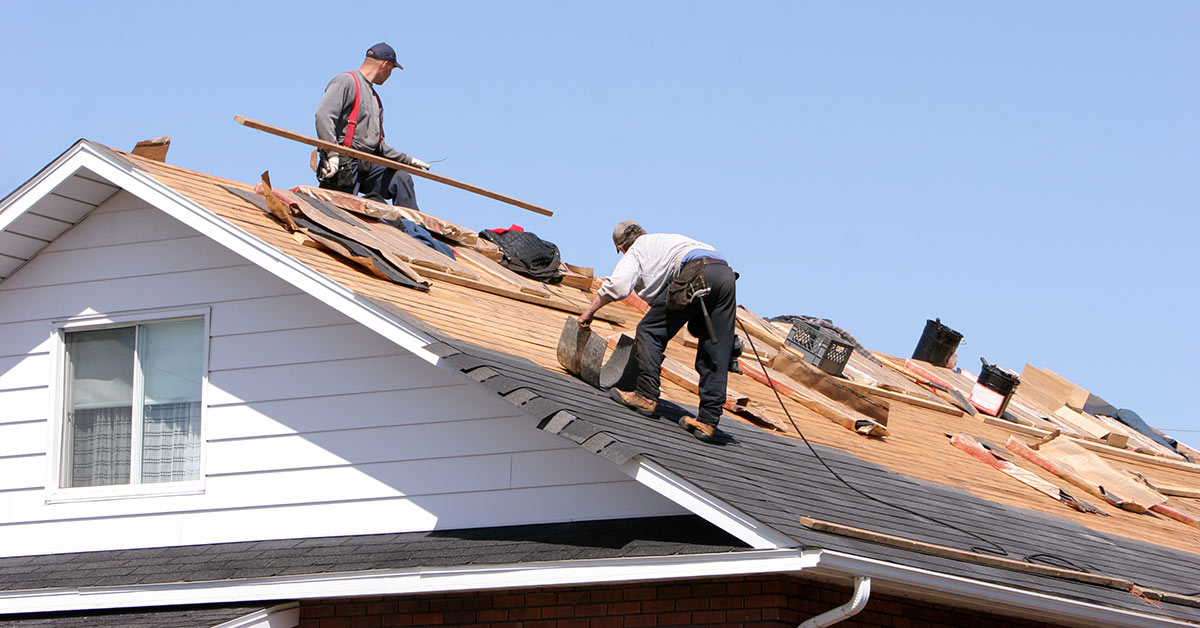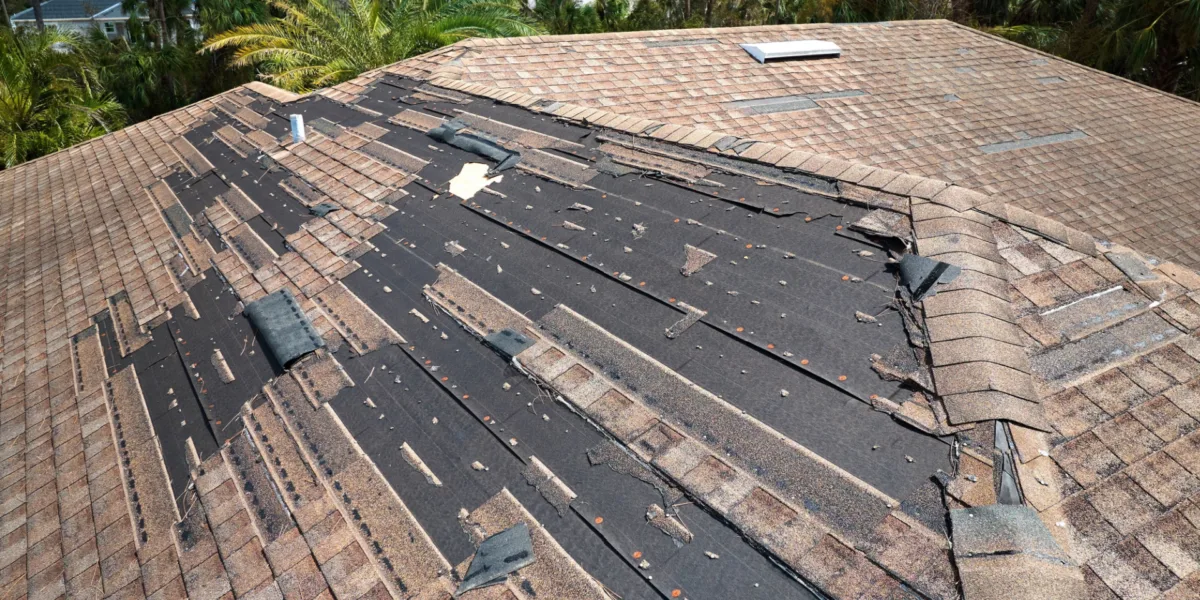Do It Yourself Roof Covering Repair Work: A Step-by-Step Overview to Correcting Common Issues
You can deal with typical roof covering issues on your own by starting with a detailed examination for visible damages like missing out on shingles or drooping locations. Spot leakages by securing changing and flashing damaged shingles. Routine checks aid avoid expensive fixings.
 roof repair
roof repairEvaluating Your Roof Covering for Damages
Before you climb onto your roofing, it's essential to check it from the ground to determine any kind of noticeable indications of damages. Look for missing out on shingles, crinkled edges, view details or staining that may suggest leaks.
Next, inspect your gutters for granules from roof shingles or standing water, both of which can indicate roof covering problems. If you detect any kind of stains on ceilings or wall surfaces inside your home, these could be indicators of water damages connected to your roofing system.
Do not forget to analyze flashing around vents and smokeshafts, as damaged blinking can result in leakages. If you see anything concerning, it's ideal to resolve it quickly to prevent a lot more extensive repair work later on. Constantly focus on safety and security, and do not hesitate to call a specialist if required.
Collecting the Needed Tools and Materials
Before you begin your roof repair, you need to gather the right devices and materials. Understanding what vital tools you'll need, creating a checklist of necessary products, and focusing on security gear will set you up for success. Allow's discuss what you'll need to tackle this task effectively and securely.
 roof repair
roof repairEssential Devices Overview
A solid roofing repair service starts with the right devices and products at your side. To deal with common concerns properly, you'll need a few vital tools. First, order a durable ladder to safely access your roofing. A roof hammer or a nail gun will certainly assist you protect tiles or other products. Do not fail to remember an energy blade for cutting roof covering products properly.
Security equipment is vital also; a pair of job handwear covers and safety and security goggles will certainly safeguard you from sharp sides and particles. A tape step guarantees exact measurements while a lever helps remove harmed shingles. With these tools in hand, you'll be prepared to handle different roof covering fixings confidently.
Required Products List
With your devices ready, it's time to gather the products needed for your roof covering repair work. For flashing repairs, buy new blinking products that fit your roofing type. Having all these products on hand will certainly make your repair service process smoother and much more reliable, so you can get the work done right.
Safety And Security Equipment Relevance
While you may be passionate to begin your roofing system repair work, don't neglect the importance of security gear. Non-slip footwear are important for keeping hold on the roofing's surface. A harness is a needs to if your roofing system is high or high, protecting against falls.
Covering Roofing System Leakages
When you discover a leak, the very first step is determining its resource to ensure an effective spot. You'll need to pick the best materials for a lasting fix once you identify the problem. We'll walk you through the very best application methods to secure those leaks and shield your home.
Identifying Leak Sources
Exactly how do you identify the source of a roofing system leakage? Beginning by checking your roofing system for noticeable damage or wear. Look for fractured shingles, missing out on tiles, or rusted blinking. Check the locations around vents, skylights, and smokeshafts, as these are usual leak spots. Climb up to your roofing and visually scan for any type of irregularities if it's risk-free. After hefty rainfall, go inside your attic room or top floorings to look for water discolorations or drips. Utilize a flashlight to help you see better in dark locations. If you can't discover the resource, take into consideration utilizing a garden tube to simulate rain, section by section, up until you identify where the water gets in. This technique can aid narrow down the leak's origin.
Choosing Spot Products
Picking the best spot products is essential for properly fixing a roof leakage. For level roofing systems, use a specialized patching product created for that surface area.
Constantly make particular the materials are suitable with your existing roof to assure a lasting fix. Pick premium products to stay clear of regular fixings down the line.
Application Strategies Described
Using spot materials effectively is essential for securing roof leakages and avoiding further damages. This guarantees a strong bond between the roofing and the patch surface. Next off, cut your spot product to fit over the damaged location, prolonging it at least two inches beyond the edges of the leak.
Replacing Broken Shingles
When you discover damaged tiles on your roofing, it's necessary to resolve the problem without delay to stop more leakages and structural damage. Thoroughly lift the harmed shingle with your pry bar to remove it without disrupting the bordering tiles. With these quick steps, you can efficiently replace damaged tiles and maintain your roof covering's honesty.
Cleaning and Maintaining Rain Gutters
To maintain your roof covering in top problem, consistently cleaning and keeping your rain gutters is critical. Clogged rain gutters can lead to water damage, mold growth, and also architectural problems.
Following, flush your gutters with a yard pipe to ensure water moves openly. Examine for leakages or rust areas while you go to it. Think about applying a sealant or changing affected areas. if you observe any kind of problems.
To stop future clogs, set up seamless gutter guards or screens, and make it a routine to cleanse your rain gutters at least twice a year, particularly before hefty rainfall or snow. Normal upkeep not just expands the life of your seamless gutters however also protects your whole roof.
Securing Roof Vents and Flashing
Securing roofing vents and flashing is essential for avoiding leakages and safeguarding your home from water damage. Beginning by checking the areas around your roof vents and blinking for any fractures or gaps. If you find any kind of, clean the surface areas completely to ensure correct adhesion. You'll wish to make use of a high-grade roof covering sealant or caulk made for exterior use.
Apply the sealant kindly, filling up all cracks and spaces, then smooth it out with your finger or a caulking tool for a neat finish. Ensure the sealer expands a little beyond the edges to create a strong bond.
Allow the sealer to heal as per the maker's instructions, usually a couple of hours or overnight. After sealing, it's a great idea to examine your work after a rainstorm to validate everything remains watertight. Normal upkeep of your roofing system vents and flashing can conserve you from costly repairs down the line.
Checking and Fixing Roof Valleys
Roof valleys are essential areas where two inclines fulfill, and they play a vital function in routing water away from your home. To examine your roofing valleys, beginning by climbing safely and trying to find indicators of damages like loose tiles, cracks, or debris. Clear out any type of fallen leaves or dirt that might block water circulation. If you observe any type of concerns, you'll need to take action quickly to stop leaks.
For small fixings, replace harmed shingles and use roof covering cement to seal gaps. Taking treatment of roof valleys promptly will aid safeguard your home from water damages and expand the life of your roof.
Often Asked Concerns
How Can I Determine if My Roofing Needs Replacement Rather of Repair Work?
To establish if your roofing needs substitute, check for comprehensive damage, sagging locations, or missing shingles. If leakages linger despite repairs or it's nearing completion of its lifespan, take into consideration substitute over fixing.
What Security Safety Measures Should I Take While Repairing My Roofing?
When repairing your roofing system, always wear a safety belt and non-slip footwear. Ensure your ladder's steady, avoid operating in negative weather condition, and have somebody nearby to aid you in situation of emergencies.
Just how Commonly Should I Inspect My Roofing System for Damages?
You should inspect your roof covering at the very least twice a year, ideally in spring and loss. After serious weather, look for damages too. Routine inspections can assist you capture problems before they develop into pricey fixings.
Can I Fix My Roof Covering in Bad Weather Issues?
You shouldn't try roofing repair work in poor weather condition. Rain, snow, or solid winds can increase risks and complicate the procedure. Await clear problems to ensure your security and attain a correct repair work.
What Should I Do if I Experience Wild Animals in My Attic Throughout Repair Works?
If you encounter wild animals in your attic room throughout repair services, stop promptly. Protect the location, avoid stunning the animals, and call a professional wildlife elimination service to securely handle the circumstance before proceeding your job.
Before you start your roofing system repair, you need to collect the right devices and products.A solid roof covering repair starts with the right tools and products at your side.With your tools prepared, it's time to gather the products required for your roof repair service.Choosing the appropriate patch materials is crucial for successfully fixing a roofing system leak. Taking treatment of roof covering valleys promptly will assist protect your home from water damages and expand the life of your roofing.